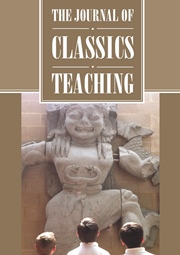
Grillo’s Pliny & Co: How to Make Money. An Ancient Guide to Wealth Management is the latest addition to Princeton University Press’s Ancient Wisdom for Modern Readers series, which seeks to present classical texts in a way that is relevant to contemporary audiences. In this volume, Grillo draws upon the writings of Pliny the Younger and other Roman figures to explore ancient strategies for financial success, investment, and economic prudence. The book not only provides a translation of key passages from Pliny’s letters and other classical sources, but also contextualizes these insights within the broader framework of Roman economic thought and its applicability today. This review examines the book’s translation, commentary, pedagogical value, and its broader significance for students engaging with classical literature and economic history.
Grillo’s translation of Pliny’s letters is both accessible and faithful to the nuances of the original Latin. Unlike strictly literal translations, which may obscure meaning for modern readers, Grillo strikes a balance between accuracy and readability. The text retains Pliny’s rhetorical sophistication while ensuring that the financial concepts remain comprehensible to contemporary audiences. This approach is particularly beneficial for students of Latin and classical studies, as it allows them to engage with the linguistic elements of the text while appreciating its practical implications.
In addition to Pliny’s letters, Grillo incorporates excerpts from other Roman thinkers, including Cicero, Seneca, and Columella, offering a broader perspective on ancient economic strategies. This intertextual approach enhances the reader’s understanding of how Roman elites viewed wealth, property management, and financial ethics. The translations are supplemented with explanatory notes that clarify historical and cultural references, making the material more accessible to students unfamiliar with Roman economic practices.
One of the book’s key strengths is its insightful commentary, which links ancient financial wisdom to modern economic principles. Grillo does not merely present Pliny’s writings as historical artifacts; instead, he actively draws comparisons between Roman and contemporary approaches to wealth management. For instance, discussions on land investment, patronage, and estate management are paralleled with modern real estate practices, networking strategies, and corporate governance. This comparative analysis helps students recognize the continuity of economic thought and the ways in which ancient insights remain relevant in today’s financial landscape.
Moreover, Grillo explores the ethical dimensions of wealth accumulation in antiquity, raising critical questions about the moral responsibilities of the wealthy. By juxtaposing Pliny’s discussions of generosity and social obligation with contemporary debates on wealth distribution and corporate social responsibility, the book encourages students to think critically about the intersection of finance and ethics. This aspect of the commentary is particularly valuable for interdisciplinary studies, as it connects classical literature with philosophy, economics, and business ethics.
From an academic standpoint, Pliny & Co serves as an excellent resource for students studying classical literature, Roman history, and economic thought. The book’s structured approach makes it an ideal supplementary text for courses in these fields, offering both primary source material and analytical commentary. Students can use it to explore themes such as Roman economic structures, the role of elite patronage, and the philosophical debates surrounding wealth in antiquity. Additionally, the book’s modern framing makes classical texts more engaging and relatable, helping to bridge the gap between historical study and contemporary relevance.
For Latin students, the book provides a practical application of language skills, as it includes original passages alongside their translations. This feature allows students to analyse Pliny’s rhetorical techniques and stylistic choices while gaining insight into his economic perspectives. Moreover, Grillo’s clear explanations of Latin terms related to finance and business enhance students’ understanding of specialized vocabulary, making the book a useful linguistic tool in addition to its historical and economic content.
While Pliny & Co is highly accessible, some scholars may find its modern framing somewhat informal compared with traditional academic analyses. The book prioritizes engagement over exhaustive scholarly debate, which might limit its use in more advanced research settings. However, for students and general readers, this approach makes the material more inviting and digestible, ensuring that the book fulfils its goal of bringing ancient wisdom to a modern audience.
In conclusion, L. Grillo’s Pliny & Co: How to Make Money. An Ancient Guide to Wealth Management is a valuable contribution to both classical studies and economic history. Through its engaging translation, insightful commentary, and comparative analysis, the book successfully demonstrates the enduring relevance of ancient financial wisdom. It serves as an excellent resource for students, providing a gateway to understanding both Roman economic practices and their modern applications. By making Pliny’s insights accessible and thought-provoking, Grillo not only enriches classical scholarship, but also encourages readers to reflect on the timeless nature of financial strategy and ethical wealth management. Whether for academic study or personal enrichment, Pliny & Co offers a compelling exploration of how ancient knowledge can inform modern financial decisions.


